
Which are the best tiles for a small bathroom?
If you are considering renovating a small bathroom in your home or spicing up an existing one with a new design, your choice of tiles is really one of the most important decisions you will make. With the vast array of colours, patterns, sizes, shapes, materials and textures Nevertheless, the sheer volume of options to choose from can quickly become stressful and just plain overwhelming, especially if you have a small bathroom. After all, once the tiles are up, they are not easily taken down.
When choosing your tiles, keep in mind the type of personality you have, do you want your bathroom to be your calming sanctuary where you go to relax in the shower after a hard day at work or are you looking for something more stylish, trendy and modern such as all black and white marble or stone tiles which many of my clients have been opting for recently. Most of the time you can’t go wrong with black and white, which are always safe and easy colours for small bathrooms. However, if you like bright colours, these can work best in small bathrooms.
If you have no idea where to start with the design of your bathroom, I will give you some tips and advice in this article on how to choose the best tiles for a small bathroom
Calculate your bathroom tile budget
When it comes to choosing bathroom tiles, it’s important to always start with a budget or at least have a good idea of how much of the overall bathroom renovation budget can be spent just on tiles. You could have your heart set on tiling the entire bathroom with porcelain tiles but this could end up costing a small fortune. However, this doesn’t mean that you need to skimp on quality or abandon your designs and ideas. With clever planning ahead, you can achieve the look you desire for your bathroom with the tile budget you choose, taking into account the overall money at your disposal.
Calculate how many bathroom tiles you need
Once you’ve decided how much to spend on the wall and floor tiles, you will need to calculate the total square footage that will be covered with tiles. This can be easily done using a laser measure or measure band by measuring the length of floor and height of the walls and simply multiplying them. I recommend buying an extra 10-15% of the tiles for the floor, wall and shower or feature area in case of breakage during the cutting process, during transportation and even for replacing tiles that can be hard to find later.
Decide on a main feature in your bathroom
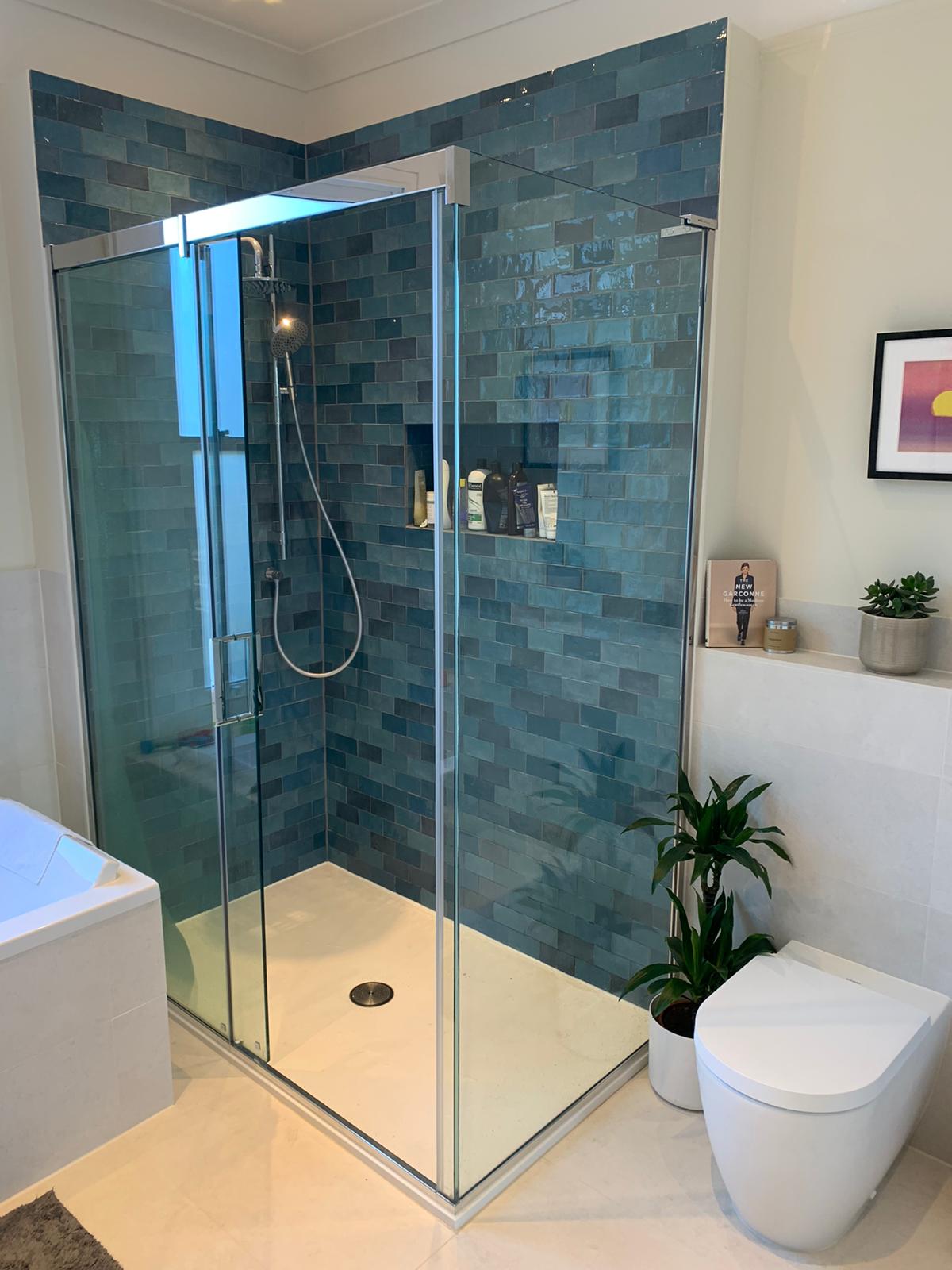
Having a focal point that stands out when entering a bathroom, such as a wow-factor should be the starting point when deciding on the design of your bathroom. This requires careful consideration, particularly for small bathrooms. Many small bathrooms don’t have space for a bath so the main focal point could be the shower or the sink where tiles could complement or enhance your chosen feature. Alternatively, a feature wall or feature floor with a creative tile design could be the actual standout point for a bathroom. A backsplash around the tap or sink area is also an option for a chosen wow-factor feature.
How to choose the right bathroom tile material?
When it comes to the actual material of the tiles, you need to think in terms of both design and practicality. Each type of tile material has its own advantages and disadvantages:
Ceramic
The most common tile material is ceramic since it is one of the most economical choices for bathrooms. They might not be as hard-wearing as porcelain tiles, however they are still fairly durable. Also, they have the advantage of being easier to cut compared to porcelain. Ceramic tiles also come in a wide range of detailed designs compared to other types of tiles. Furthermore, ceramic is ideal for both wall and floor tiles.
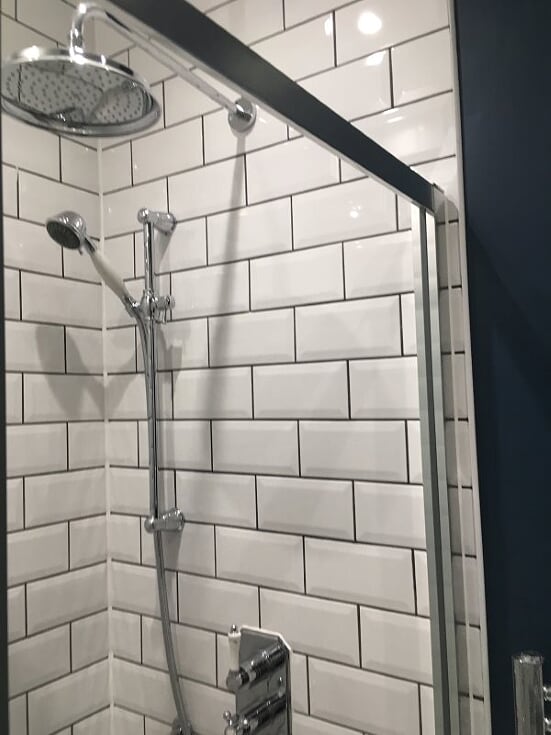
Porcelain
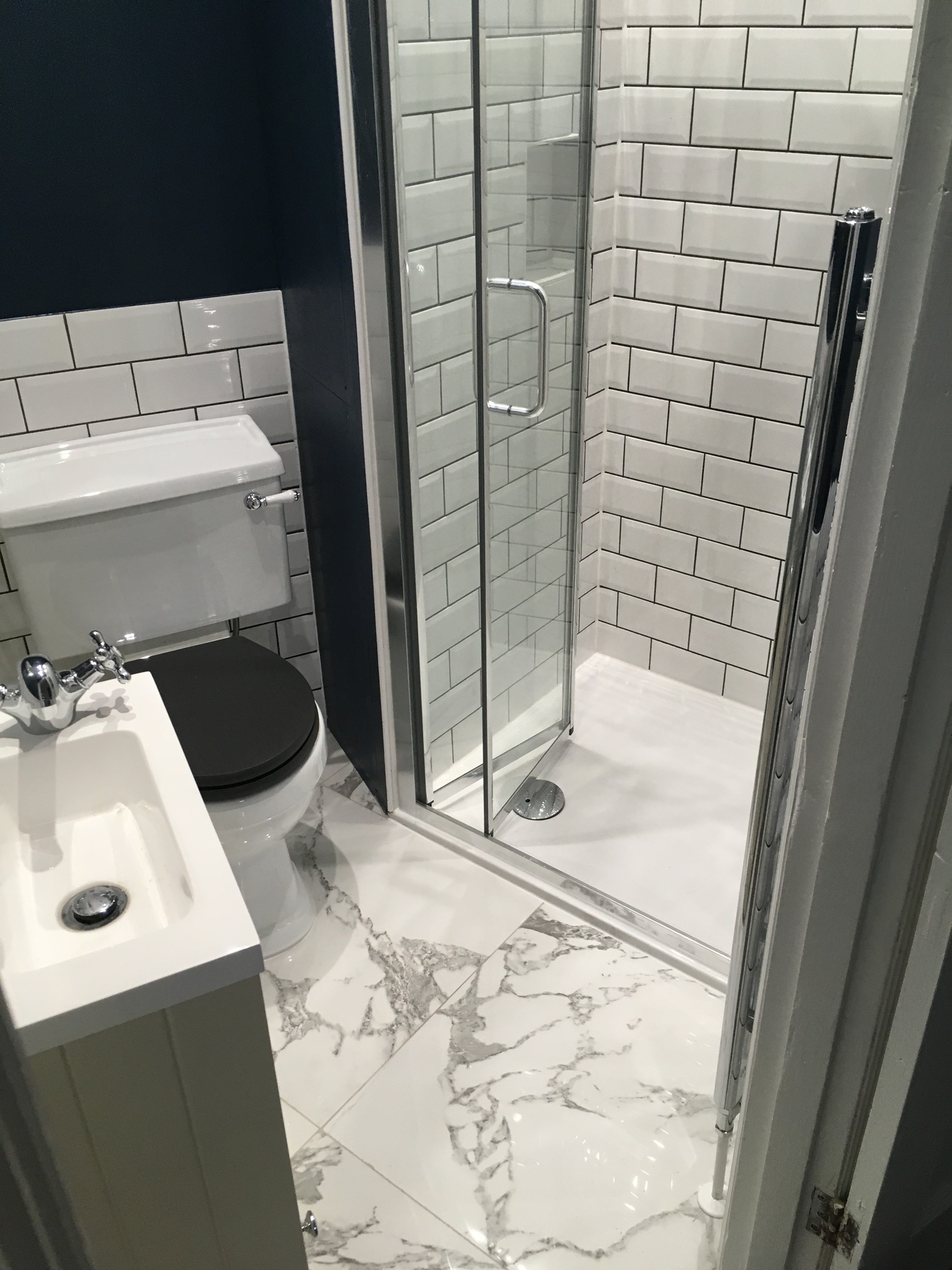
Porcelain tiles are generally more expensive than ceramic tiles, however they are more resistant long-term and perfect for high traffic areas such as around the shower and bathroom sinks. They are more moisture resistant and durable making them a great choice for floors as well as walls and are easy to clean and maintain. In the event that some porcelain tile gets chipped off, the advantage is that the colour goes all the way through compared to ceramic tiles for example.
Natural stone
Natural stone such as slate, granite, marble, limestone, and sandstone can create a calming and natural soothing effect that gives a botanical green look which is currently quite on-trend. However, it’s on the expensive end of the tile budget and they can be challenging to clean with their rough and uneven surface.

Wood effect

Wood effect wall or floor tiles give a warm and natural look in the living room, kitchen, bathroom or wet room flooring. Some of you might have mixed feelings about having wood in your bathroom, due to water and moisture issues; wood may not be the right design choice for you in the end. However, wood effect tiles can work as feature wall tiles, another trend that makes the room look like a relaxing spa bringing relaxation and tranquility into your home
Glass
Glass can be used for wall tiles in either smaller areas by using mosaic tiles for example or the main feature wall in showers bringing natural light into bathrooms making the room look bigger. Some may think glass tiles are outdated, however they are a timeless style and you can get really atistic with them creating for example a feature wall to express your personality. You can create truly different styles when it comes to your feature wall using mosaics to make patterns and shapes with the vast range of colours available. However, care needs to be taken with glass as glass floor tiles are rather slippery and may chip or break easily. They are not as durable as other floor tiles.
Which colour tiles to choose for a small bathroom?
When it comes to tile ideas, avoid super trendy tiles as they might not represent your personality and go out of fashion quickly. Instead, start with the tiles which make the body of your bathroom such as the walls and floor coverings. Alternatively and as mentioned earlier, make your shower the main feature and focal point and continue with the wall and floor tiles.
At first it can be quite overwhelming with the range of bathroom tile colours. In general lighter tile colours such as white or cream will help a small bathroom room look bigger as they reflect more light compared to darker tile colours. However, creating a contrast design look with black and white tiles can be used effectively by adding some depth either throughout the bathroom or on walls which will make the room look longer and wider.
Another trick for getting the right tiles for small bathrooms is to use glossy tiles, which will enhance the space by reflecting light, and therefore giving a feel of a bigger room.
Using extreme colourful tiles such as red, green, blue or purple should be avoided for small bathrooms; besides, they are used mainly for feature walls or accent tiles since they add dimension, creating an arty feel and design for your bathroom.

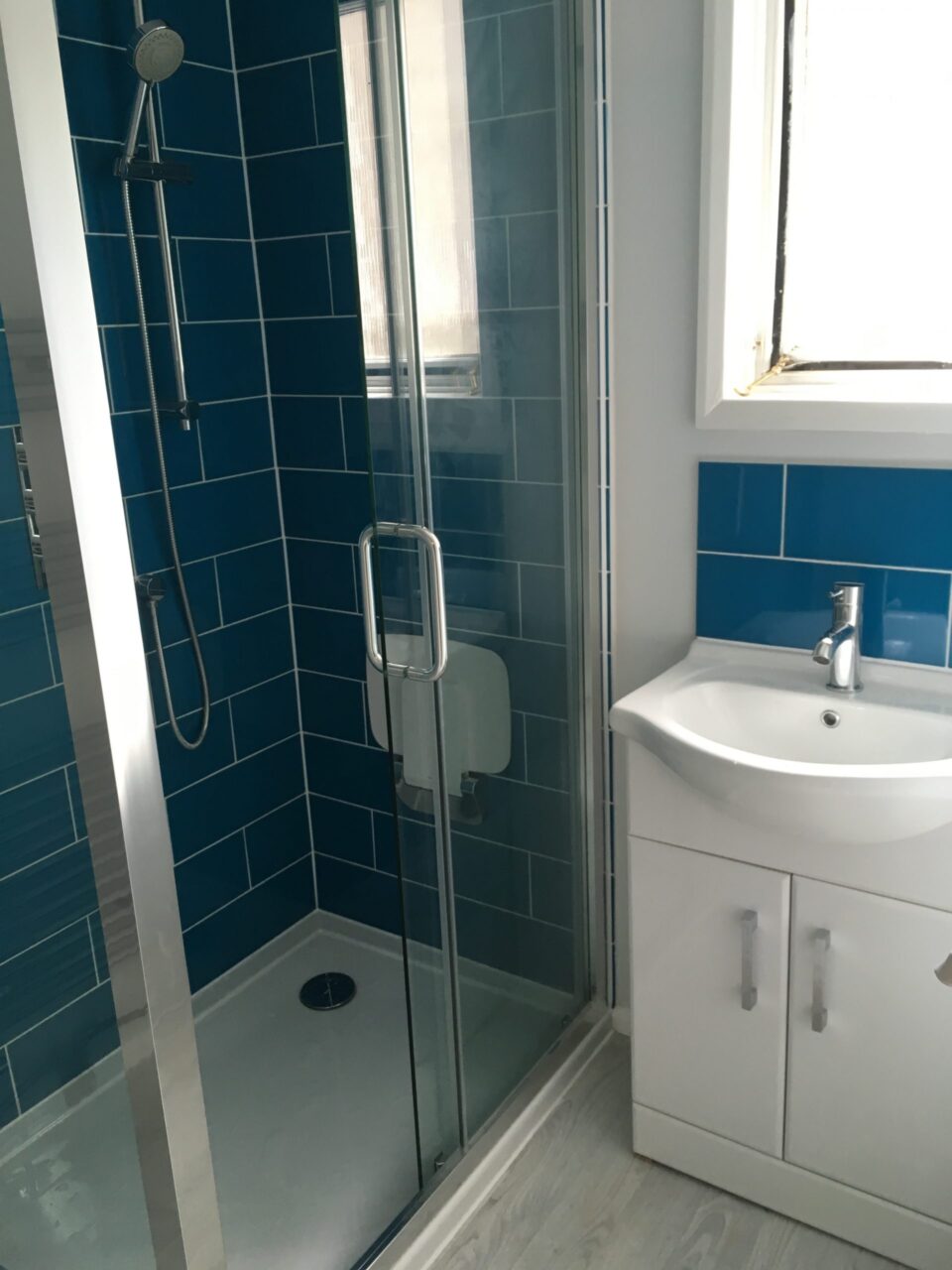
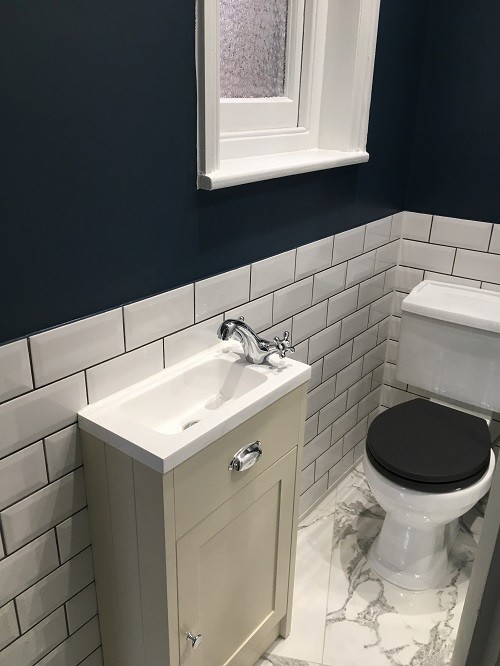
What is the ideal tile grout for your bathroom?
Once you’ve decided on your bathroom’s focal point, the wall and floor tiles, then it’s time to decide on the grout. Most of us leave this to the end or even forget to think about it, however grout lines change the whole look of your bathroom design. It’s quite common to choose thin lines between tiles and to select a similar colour for the grout lines, such as white or beige. On the other hand, the grout could also be the feature by choosing a darker colour option and wider lines between the tiles. That also means that the chosen layout of the tiles may become a pattern and you can make floor tile shape designs with amazing grout lines. Another good floor and grout design for small bathrooms is using large format floor tiles with fewer grout lines which work really well as it looks less cluttered and creates a sense of a bigger space.
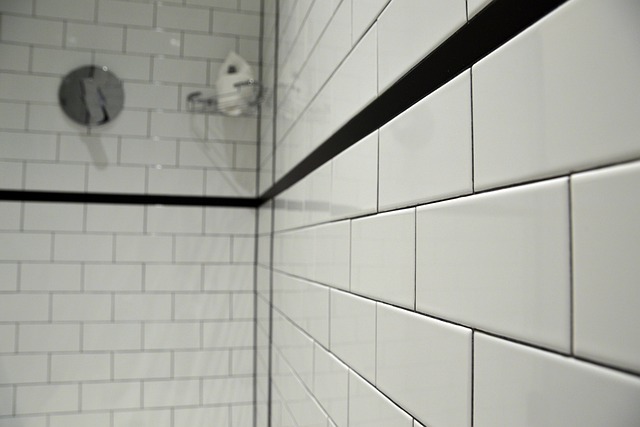
How to choose the right bathroom tile size?
When it comes to choosing the size of your wall tiles, small tiles generally work best while large format tiles work best on the floor. Choosing metro tiles is a modern design option as they are in style at the moment. They are used mainly for walls and you can use them in different ways to create your own pattern, adding depth and space to a small bathroom. Metro tiles are usually ceramic and easy to maintain and clean. They are great for small bathrooms and you can use them to create various patterns in one colour placing them vertically, horizontally and diagonally. In small bathrooms, patterned wall or floor tiles such as ones with busy designs should be avoided. They will just make the room look smaller and cluttered.
Whatever your bathroom needs, whether you require help on deciding on bathroom tiles for a complete new bathroom renovation or just to get some new bathroom design and ideas, I’m available to guide and advise you on your next bathroom project. Get in touch via the contact me form.Looking forward to hearing from you soon!
